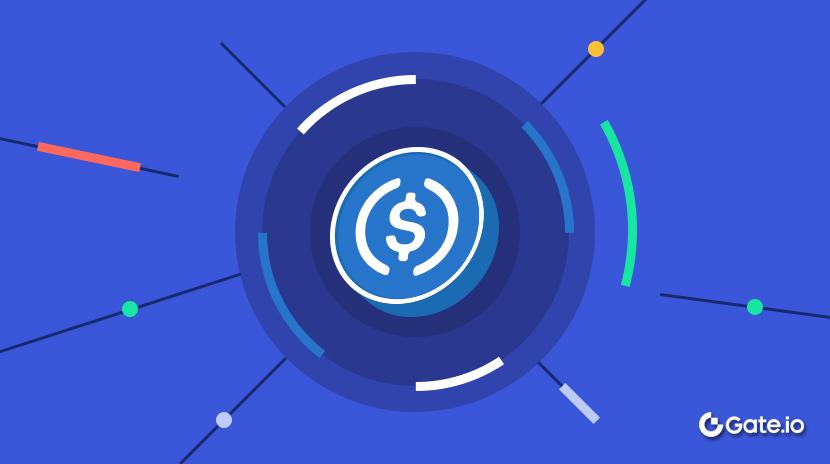AC Révélé : Stagnation DeFi, Ethereum à un carrefour, et l'art de construire dans Crypto
Quels nouveaux éclairages André Cronje (AC) apporte-t-il à l'évolution de Web3 lors de son retour dans DeFi?

Dans le monde rapide et incertain de la finance décentralisée (DeFi), le nom d'Andre Cronje porte un poids significatif. Connu comme la force motrice derrière des projets comme YFI, Solidly et Fantom, AC repousse à nouveau les limites en tant que directeur technique de Sonic. Ses contributions ont laissé une empreinte indélébile sur la frontière de la finance cryptographique.
Dans cet épisode du podcast DCo, AC partage ouvertement son point de vue sur les goulots d'étranglement auxquels DeFi est confronté, les défis au sein de l'écosystème Ethereum, et les dures réalités auxquelles les constructeurs doivent faire face dans un monde où l'idéalisme et les motivations basées sur le profit entrent en collision.
De la navigation des batailles réglementaires à la recherche d'un équilibre délicat entre la décentralisation et l'expérience utilisateur, ses idées servent à la fois de récit d'avertissement pour les constructeurs de l'industrie et d'inspiration pour ceux qui rêvent encore d'un avenir financier décentralisé.
Voici l'interview complète :
01 S'attaquer aux défis réglementaires autour des actifs cryptographiques
Le podcast DCo : Bienvenue dans l'émission, Andre. Vous êtes bien connu pour avoir créé Yearn Finance, Solidly et Fantom, et maintenant vous êtes le directeur technique de Sonic. Les dernières années ont été un véritable tourbillon pour la crypto. Pouvez-vous partager avec nous à quoi ont ressemblé les trois dernières années pour vous, en particulier les défis auxquels vous avez été confrontés et comment vous les avez relevés ? J'imagine que vous êtes désormais plus concentré sur la programmation que sur les questions réglementaires.
Andre Cronje: Merci de m'avoir invité. Honnêtement, je voudrais pouvoir dire que je suis uniquement concentré sur la programmation, mais les problèmes réglementaires et légaux occupent toujours une part importante de mon temps. Les quatre dernières années ont été une courbe d'apprentissage abrupte. J'ai dû faire face à des événements comme l'exploit d'Eminence, qui a été une leçon majeure dans la construction en public. Ensuite, avec le projet Solidly, j'ai réalisé que le paysage crypto évoluait, les gens étaient de moins en moins préoccupés par une véritable décentralisation ou immuabilité.
En plus de cela, même si je ne suis qu'un gars qui développe localement en Afrique du Sud, qui n'a pas levé de fonds ou vendu de jetons, j'ai fini par devoir traiter avec la SEC. Ils m'ont envoyé des tonnes de lettres et de demandes, c'était épuisant. J'ai beaucoup appris et j'ai grandi de cette expérience, mais c'était vraiment difficile. Veux-tu te plonger dans quelque chose en particulier, ou devrions-nous rester généralistes ?
Le podcast DCo : Je suis vraiment curieux d'en savoir plus sur la façon dont vous avez géré toutes ces lettres de la SEC. Avez-vous eu une aide juridique ? Comment avez-vous navigué dans ce processus, surtout que cela semble incroyablement écrasant au début ?
Andre Cronje : Au début, j'étais assez naïf. Les lettres initiales semblaient simples - juste des demandes d'informations, mais avec des menaces implicites selon lesquelles les choses pourraient s'aggraver si je ne coopérais pas. Ils posaient des questions comme « À qui avez-vous vendu des jetons ? » La réponse était simple : je n'en ai vendu à personne. Ou encore, « Comment gagnez-vous de l'argent grâce au protocole ? » Encore une fois, c'est simple : je n'en gagne pas.
Je pensais que ce serait la fin. Mais la deuxième lettre était plus détaillée, et à la cinquième ou sixième, il est devenu clair qu'ils comprenaient DeFi, jetons, et comment ces systèmes fonctionnaient. J'avais l'impression qu'ils essayaient de me piéger en train de faire une erreur, et non pas réellement chercher des informations.
Au troisième lettre, j'ai réalisé que j'avais besoin d'aide. Je n'avais pas levé de fonds, donc je devais compter sur mon réseau. J'ai contacté Gabriel de Lex Node, un avocat crypto prolifique qui avait travaillé avec de nombreux DAO. Il était fantastique et très soutien. Grâce à lui, j'ai été en contact avec Steven Palley, un autre vétéran dans le domaine qui connaissait vraiment son affaire.
Gabe s'est occupé de la majeure partie du travail initial, et Steven est devenu fortement impliqué plus tard. Ils étaient cruciaux, car il ne s'agissait pas seulement des informations que vous fournissez, mais aussi de la manière dont vous les formulez. Vous devez utiliser un langage juridique spécifique pour vous protéger.
L'accent de l'enquête a évolué avec le temps. Initialement, ils se préoccupaient des jetons - si je les avais vendus et à qui. Lorsqu'ils n'ont trouvé aucun angle là-bas, ils ont basculé vers la façon dont je pourrais gagner grâce au protocole. Lorsque cela n'a pas non plus fonctionné, ils ont soutenu que le trésor lui-même constituait une sécurité, citant le test de Howey, disant que les utilisateurs contribuaient des fonds à un tiers avec l'attente de profit. C'était frustrant, car ils me demandaient souvent de prouver une négative - comme prouver que le Père Noël n'existe pas. Vous ne pouvez tout simplement pas le faire de manière définitive.
Les lettres se sont arrêtées en raison de l'élection à venir. Environ six à huit mois avant l'élection, j'ai reçu la dernière. Il y a un mois, j'ai reçu une dernière lettre indiquant qu'ils ne prendraient aucune mesure coercitive supplémentaire, ce qui a été un énorme soulagement. Mais le temps et l'énergie qu'il a fallu étaient insensés.
Pendant un certain temps, je n'ai fait que collecter des données pour eux pendant trois semaines d'affilée, parfois des informations que je n'avais même pas, comme des journaux de gardiens tiers que je n'ai jamais utilisés. Ce niveau d'épuisement rendait presque impossible de faire quoi que ce soit d'autre.
02 L'évolution et la stagnation de DeFi
Le podcast DCo : cela semble incroyablement intense. Vous avez déjà mentionné la décentralisation et laissé entendre que les gens ne la priorisent plus. Pensez-vous qu'il y a un conflit inhérent entre gérer un projet de crypto comme une entreprise durable et le maintenir décentralisé ? Est-ce la raison pour laquelle nous accordons moins d'importance à la décentralisation ces jours-ci ?
Andre Cronje : Tout dépend totalement des participants du marché. Lorsque j'ai lancé Yearn, la décentralisation, l'auto-garde et l'immutabilité étaient d'une importance capitale. Le marché était plein de technocrates anarchistes - des puristes qui étaient là pour l'idéologie, pas pour faire des millions. Cette vieille blague, "Je suis là pour la technologie", était complètement sincère à l'époque.
Mais la base des participants a changé. Le farming de rendement, l'essor des NFT et maintenant les jetons mèmes ont abaissé la barrière à l'entrée. Vous n'avez plus besoin de comprendre la technologie, il vous suffit d'installer un portefeuille, d'appuyer sur quelques boutons ou de vous connecter à une application avec votre empreinte digitale. Je dirais que 90% du marché d'aujourd'hui ne partage pas les idéaux techniques originaux. Ils sont là pour l'appréciation des jetons ou le rendement, pas pour la philosophie.
Cela crée un déséquilibre. Si vous construisez des primitives DeFi fondamentales, sur lesquelles d'autres construiront, elles doivent être immuables. Vous ne pouvez pas laisser quelqu'un construire une entreprise sur votre primitive et ensuite la changer, ce qui causerait la rupture de leur système. Par exemple, 90% de DeFi repose toujours sur Uniswap V2 car c'est prévisible et immuable. Si Uniswap avait rendu V2 évolutif via un proxy et avait changé la logique LP du jour au lendemain, DeFi se serait effondré.
Andre Cronje: Ces jours-ci, les projets sont devenus plus cloisonnés. Tout le monde construit son propre AMM ou marché de prêt au lieu d'utiliser des primitives tierces, car ces systèmes tiers sont souvent mis à niveau. Si vous construisez un produit immuable qui dépend d'un système évolutif, votre produit pourrait se casser lorsqu'ils poussent une mise à jour. Ainsi, la composabilité et la dépendance à l'égard des tiers ont été reléguées au second plan.
Le marché est passé de la construction de primitives immuables et composables à la création d'entreprises axées sur le revenu ou la valeur des jetons. C'est un effet boule de neige : plus les projets donnent la priorité au revenu, moins il reste d'options d'infrastructure immuable sur lesquelles construire, ce qui pousse à son tour plus de projets à suivre le mouvement. En 2019, j'ai écrit que nous votons avec notre argent. L'endroit où nous plaçons notre capital détermine ce qui est construit. Au début de 2021, les gens se sont rués vers les forks d'Uniswap et de Compound parce qu'ils étaient considérés comme « sûrs ».
Les nouveaux primitives sont plus risqués - ils ont plus de chances d'être piratés ou exploités - donc l'innovation a stagné. C'est aussi pourquoi les meme coins sont si populaires en ce moment. Depuis 2022, l'innovation DeFi a largement stagné. Nous avons construit de meilleurs produits, comme Hyperliquid, mais ce ne sont que des itérations des primitives existants - pas fondamentalement nouveaux.
Le podcast DCo : Vous avez mentionné précédemment que l'innovation DeFi a stagné et que la composition, c'est-à-dire la construction sur la base d'autres produits, a diminué. Avec la liquidité cloisonnée, des choses comme l'utilisation d'un actif comme garantie à travers les protocoles sont devenues plus difficiles. Y a-t-il suffisamment d'incitation pour sortir de cette approche isolée, et comment pourrions-nous y parvenir ?
Andre Cronje : Cela peut sembler un peu arrogant, mais le problème est que vous avez besoin d'une combinaison rare de compétences : quelqu'un qui sait coder, qui peut proposer des idées et des primitives véritablement novatrices, et qui n'a pas besoin de financement externe. Cette intersection est incroyablement petite. Je peux utiliser mon propre cas comme exemple, mais c'est très rare. La plupart des constructeurs ont besoin de financement, mais lever des capitaux et construire sont des ensembles de compétences totalement différents.
J'ai essayé de collecter des fonds, ce n'est pas ma force, alors j'ai choisi de construire sans soutien financier. D'autres ont des idées brillantes mais ont du mal à faire des pitchs ou à réseauter. Pendant ce temps, vous verrez la 99ème fourchette d'un projet lever 50 millions de dollars du jour au lendemain juste parce qu'ils connaissent les bonnes personnes.
Les vrais bâtisseurs ont du mal à obtenir le financement dont ils ont besoin. La plupart des gens ne peuvent pas se permettre de rester six mois sans revenu pour payer leurs factures. Hyperliquid est une exception - ils n'ont pas levé de fonds parce que l'équipe avait déjà mené avec succès une opération de création de marché, leur donnant les ressources nécessaires pour construire et même gérer une énorme distribution aérienne.
Mais lorsque vous levez des fonds, vous devez faire face à la pression des VC. Les VC veulent un retour sur investissement - ils n'investissent pas parce qu'ils croient en votre vision. C'est leur travail, et cela crée un désalignement des objectifs.
Historiquement, dans la finance traditionnelle ou Web1/Web2, les entreprises construisaient des entreprises stables et faisaient scission avec de petites équipes de R&D pour tester de nouvelles idées. Nous avons vu un peu de cela dans le domaine de la cryptomonnaie—comme Aave a lancé GHO, Lens, ou Family—mais ce n'est pas suffisant. Les risques sociaux et de réputation sont trop élevés. Si un sous-produit est exploité, même pour seulement 50 $, les gros titres crieront que le projet principal a été piraté. Le rapport risque-récompense est totalement biaisé.
C'est donc un problème difficile, et il n'y a pas de solution immédiate. La plupart des développeurs sont déjà assez fous pour essayer - traiter avec des exploits et des dommages à la réputation nécessite un brin de masochisme.
Le podcast DCo : Revenons aux primitifs DeFi. Vous avez mentionné que vous travaillez sur de nouveaux. Où pensez-vous que DeFi se situe en termes de ses blocs de construction fondamentaux, et quels primitifs immédiats pouvons-nous construire pour faire avancer l'espace ?
Andre Cronje: DeFi en est encore à ses débuts. Même des primitives fondamentales comme les Automated Market Makers (AMM) sont loin d'être parfaites. Nous utilisons encore des formules de produit constantes comme X*Y=K. Curve Finance a introduit des swaps stables, et j'ai apporté le modèle X3Y avec Solidly, mais l'innovation y est principalement stagnante.
Avec l'amélioration des vitesses de la blockchain, nous commençons à voir l'émergence des Dynamic Liquidity Market Makers (DLMMs), ce qui est un pas en avant. Il reste encore beaucoup de travail à faire avec les AMM - nouveaux modèles de courbe, mécanismes de trading et stratégies de fourniture de liquidité.
La prochaine percée majeure sera les oracles on-chain. DeFi les a traditionnellement évités en raison des craintes d'exploitation, mais ils peuvent être sécurisés avec des méthodes d'implémentation alternatives. Sans oracles, nous manquons de données critiques telles que la volatilité, la volatilité implicite ou la profondeur du carnet d'ordres. Une fois que nous aurons des oracles on-chain robustes, nous pourrons construire des modèles de tarification appropriés, exécuter des calculs de Black-Scholes et activer des options de style européen ou américain. Cela débloquera des perpetuals on-chain et des stratégies delta-neutres, toutes deux actuellement impossibles.
Il suffit de regarder la finance traditionnelle : les contrats à terme et les options dominent, mais ils sont presque inexistants on-chain. La feuille de route est claire - vous avez d'abord besoin des données. Pourtant, personne ne veut construire cela, principalement par peur. Mais il est possible de mettre en œuvre des solutions hautement sécurisées, entièrement on-chain, ou d'utiliser des oracles hors chaîne avec des preuves de connaissance zéro ou des méthodes décentralisées pour éviter les intermédiaires de confiance.
Au-delà de cela, nous manquons encore de primitives d'assurance solides. DeFi a un vaste territoire inexploité. C'est encore la phase précoce, et si nous pouvons surmonter notre peur de l'innovation, le potentiel est énorme.
03 Équilibrer la décentralisation et l'expérience utilisateur
Le podcast DCo : Pensez-vous que l'expérience utilisateur (UX) et la décentralisation sont intrinsèquement en conflit ? Est-ce une partie du défi ?
Andre Cronje : Absolument — à 100 %. Une véritable décentralisation signifie aucuns sites web, aucun navigateur tiers — juste télécharger le logiciel de nœud, exécuter un nœud local, et utiliser une interface en ligne de commande (CLI) pour soumettre des transactions et interagir avec des contrats intelligents immuables. Cela nécessite une connaissance technique approfondie — synchronisation du logiciel, encodage des transactions dans des formats de hachage en base 64, et non seulement appeler des RPC JSON. Globalement, peut-être seulement 10 000 personnes peuvent le faire, voire moins.
D'un autre côté, une excellente UX signifie que les utilisateurs n'ont pas à penser aux clés privées ou aux frais de gaz. Regardez les applications Solana réussies : vous téléchargez une application mobile, vous vous connectez avec Google ou Face ID, et appuyez sur un bouton. C'est à des kilomètres de la décentralisation, c'est quelque chose de complètement différent.
Les applications réussies d'aujourd'hui cachent de plus en plus de choses à l'utilisateur, par exemple, la gestion des clés privées en leur nom. Hyperliquid est excellent, mais une fois que vous déposez des fonds, il n'est plus décentralisé. Vos actifs sont détenus dans un portefeuille qu'ils contrôlent et la clé privée est stockée sur leurs serveurs. C'est une excellente expérience utilisateur, mais c'est centralisé.
Ma démarche consiste à d'abord construire pour l'idéal de décentralisation - des contrats bruts on-chain avec lesquels les utilisateurs de CLI peuvent interagir sur leurs propres nœuds. Ensuite, j'ajoute des couches d'abstraction par-dessus : une API simplifiée qui supprime le besoin de mots de passe de portefeuille ou qui abstrait les frais de gaz. Finalement, vous obtenez une interface utilisateur où un utilisateur clique simplement sur un bouton, et en coulisses, cela convertit leur action en une transaction de contrat intelligent via une API et un portefeuille de signature.
Andre Cronje : C'est la manière "correcte" de faire les choses - mais pour le petit nombre de personnes qui peuvent utiliser l'interface en ligne de commande (CLI), cela demande une énorme quantité d'infrastructure de soutien, ce qui peut sembler futile. La décentralisation et l'expérience utilisateur sont comme la sécurité et l'expérience utilisateur - une véritable sécurité nécessite des mots de passe complexes, des systèmes isolés et des rotations de clés, mais personne ne le fait pour un jeu mobile gratuit. Historiquement, lorsque la sécurité et la facilité d'utilisation entrent en conflit, c'est toujours la facilité d'utilisation qui l'emporte. Il en ira de même avec la décentralisation.
L'objectif est que les utilisateurs ne sachent même pas qu'ils utilisent une blockchain, pas de portefeuille, pas de frais de gaz. Actuellement, cela est réalisé grâce à des solutions de contournement centralisées, telles que des API ou des serveurs backend. Mais je crois que nous pouvons finalement faire de ces fonctionnalités des citoyens de première classe de la blockchain, permettant aux utilisateurs de profiter d'une excellente UX sans avoir à faire confiance à des tiers.
Pour l'instant, nous mettons en œuvre ces choses manuellement grâce à des solutions centralisées, mais finalement, nous les codifierons dans des systèmes décentralisés. C'est comme lorsque j'ai commencé à programmer : faire d'abord les choses manuellement, puis les automatiser. Nous avons juste besoin de temps.
Le podcast DCo : Deux questions de suivi : Tout d'abord, comment pouvons-nous atteindre ce futur décentralisé mais convivial pour l'utilisateur ? Et deuxièmement, si la décentralisation et l'expérience utilisateur sont en conflit, où tracez-vous la ligne - quand sacrifieriez-vous la décentralisation pour une meilleure expérience utilisateur ?
Andre Cronje : Je vais répondre à la deuxième question en premier. La limite dépend de ce que l'utilisateur est prêt à tolérer, et cela varie en fonction de l'application. Pour un jeu mobile gratuit, les utilisateurs s'attendent à zéro friction - installation et jeu. S'ils sont invités à fournir un nom d'utilisateur, un mot de passe ou un lien vers un compte social, ils ne s'embêteront pas car la valeur perçue est faible.
Mais pour une application bancaire avec 100 000 $, les utilisateurs acceptent le 2FA ou des étapes supplémentaires car la valeur est élevée. Chaque application doit trouver ce point d'équilibre en fonction de la valeur psychologique que l'utilisateur lui accorde.
En ce moment, les applications Crypto n'offrent pas beaucoup de choix. Que ce soit un jeu ou un protocole DeFi, vous devez toujours télécharger un portefeuille, sécuriser vos clés, le financer avec du gaz et signer des messages. C'est une énorme barrière. Nous avons observé un schéma similaire en matière de cybersécurité au milieu des années 2010 - les sites exigeaient des mots de passe de 32 caractères avec des symboles, mais les utilisateurs les oubliaient et les réinitialisations étaient douloureuses. Finalement, les applications ont permis aux utilisateurs de choisir leur propre niveau de sécurité tout en offrant certaines protections en arrière-plan. La crypto évoluera de manière similaire.
Pour la première question - comment y parvenir - nous avons besoin de constructeurs prêts à exécuter. Ethereum a longtemps été un leader, et ses recherches, telles que les propositions d'amélioration d'Ethereum (EIP), ont tracé une feuille de route pour les cinq prochaines années. Des fonctionnalités comme le regroupement des transactions et l'abstraction des comptes vont dans la bonne direction, mais elles ne sont pas encore des citoyens de première classe - vous avez encore besoin d'une infrastructure tierce ou de connaissances approfondies pour les utiliser.
La prochaine mise à niveau de PCRA en fera des fonctionnalités natives, ce qui est crucial. La feuille de route existe déjà; la clé est l'exécution. Mais peu d'équipes sont prêtes ou capables de le faire. Les idées sont bon marché, l'exécution est tout. Je crois que cette année, nous verrons des progrès majeurs, comme le gaz entièrement sur chaîne et l'abstraction de compte, ce qui signifie aucun besoin de portefeuille ou de gaz du tout. C'est un énorme bond en avant en matière d'expérience utilisateur. Les utilisateurs n'auront pas besoin de savoir sur quelle blockchain ils se trouvent ou d'utiliser MetaMask. Cela arrive, peut-être cette année ou l'année prochaine. La feuille de route est claire.
04 Les défis d'Ethereum et les conseils aux développeurs
Le podcast DCo : Vous avez mentionné Ethereum plus tôt. Quel est votre avis sur son état actuel ? Il y a eu beaucoup de critiques selon lesquelles il manque de direction, de focalisation dans l'exécution, ou que la mise à l'échelle de la couche 2 (L2) a fracturé l'écosystème.
Andre Cronje : J'ai toujours été franc en disant que les L2 sont une perte de temps et d'efforts. Les ressources et le capital versés dans ces derniers reflètent le même problème de désalignement que j'ai mentionné précédemment - nous votons avec notre argent. Lorsque seuls les forks d'applications connues sont financés, c'est tout ce que nous finissons par voir. Maintenant, les L2 absorbent du capital, mais tout en revendiquant un alignement avec Ethereum, ils deviennent de plus en plus centralisés.
Mon problème n'est pas avec l'existence des L2, je pense qu'ils seront finalement nécessaires pour l'évolutivité. Mais Ethereum est loin de sa limite de scalabilité. Il utilise probablement seulement 2% de sa capacité maximale. Il reste encore beaucoup de place sur la couche de base. Des chaînes comme Sonic, Avalanche et Solana ont montré qu'il est possible d'atteindre un débit élevé sur la couche de base sans L2. L'accent actuel mis sur les L2 est prématuré, cela fragmente l'écosystème et nuit à la composition et à l'UX.
Les L2 devaient être composables et interopérables, mais ils sont devenus des silos - des chaînes secondaires avec des séquenceurs centralisés extrayant le MEV pour le profit. Ce n'est pas la vision originale. La question plus importante est de savoir pourquoi cela s'est produit. Ethereum suit le cycle de vie typique d'une entreprise : initialement agile, R&D rapide, beaucoup d'expérimentation. Mais à mesure qu'il attirait l'attention et grandissait, il est devenu plus prudent, ajoutant la conformité, la surveillance, les tests, les comités et les conseils.
Cette bureaucratie l'a ralenti au point de stagnation. Il est désormais trop grand pour se déplacer rapidement. À ce stade, une organisation se débarrasse soit de l'excès et se recentre sur ses racines techniques, soit se fait dépasser par des concurrents plus rapides. Ethereum est à ce carrefour. Nous observons des tremblements internes - changements de direction, remaniements du conseil, Vitalik essayant de diriger les choses. J'espère qu'ils retrouveront leur concentration, car je suis fidèle à Ethereum; c'est pourquoi je suis dans DeFi. Mais nous ne pouvons pas rester assis à attendre qu'ils arrangent les choses.
Leurs recherches, en particulier les propositions d'amélioration d'Ethereum (EIP), continuent de fixer la norme pour les deux à cinq prochaines années, en particulier en ce qui concerne l'UX, l'abstraction de compte et les oracles on-chain. Mais la plupart ont été rédigées entre 2018 et 2020. Les idées sont là ; la mise en œuvre est en retard. En termes de scalabilité, la couche de base d'Ethereum n'utilise que 2 % de sa capacité. Même sans les L2, il y a un énorme potentiel de croissance.
Mon travail sur Phantom—maintenant Sonic—a prouvé cela. À l'époque où Ethereum utilisait la preuve de travail, nous avons remarqué que sa capacité était limitée par les contraintes de temps de bloc. Nous avons repensé le mécanisme de consensus en utilisant la tolérance aux fautes byzantines asynchrones (BFT), atteignant 50 000 à 60 000 transactions par seconde. Mais la Machine Virtuelle Ethereum (EVM) est devenue le goulot d'étranglement, nous limitant à environ 200 transactions par seconde.
Nous avons analysé l'EVM et identifié des domaines clairs à améliorer. Le plus gros problème est la base de données — LevelDB, PebbleDB, etc. — qui passe la plupart de son temps sur les opérations de lecture et d'écriture. Ces bases de données sont excessives pour la blockchain ; elles ont été conçues pour des requêtes à usage général, pas pour la structure de données adresse-nonce simple utilisée par l'EVM. Nous avons construit SonicDB, une base de données plate sur mesure pour la blockchain, qui a augmenté le débit de l'EVM de huit fois et réduit les besoins en stockage de 98 %. Ethereum pourrait implémenter cela demain et constater d'énormes gains.
Nous avons également apporté d'autres ajustements - nouveaux compilateurs, super ensembles, etc. - mais le changement de base de données était le gain le plus facile. Pourquoi ne l'ont-ils pas fait? Parce qu'ils évitent les risques. Leur technologie gère des milliards de dollars d'actifs, et tout changement est effrayant. Le compromis est de perdre la fonctionnalité des requêtes SQL, mais en réalité, personne n'utilise les requêtes SQL sur des données de blockchain à grande échelle - des outils comme Dune ou Tenderly traitent les transactions individuelles. Ce n'est pas une perte réelle, mais Ethereum est tellement réticent au changement que même les améliorations à faible risque sont mises de côté.
Le podcast DCo : Vous avez mentionné des idées comme les scores de crédit on-chain, sur lesquels nous pouvons nous plonger la prochaine fois. Mais enfin, quel est votre conseil le plus important pour les nouveaux constructeurs dans cet espace ?
Andre Cronje : Mon conseil a évolué avec le temps. Honnêtement, développer dans l'espace cryptographique n'est pas le choix le plus intelligent, c'est plus compliqué, moins sécurisé et avec des impacts négatifs potentiels plus importants que dans d'autres domaines. Mais si vous décidez de vous lancer, construisez en public. Partagez votre travail sur Twitter, rendez votre GitHub open-source, laissez les gens voir et tester votre code. Construisez une communauté de contributeurs, pas seulement une communauté de personnes exploitant des vulnérabilités.
Si les exploits sont inévitables, il vaut mieux qu'ils se produisent tôt, lorsque le risque n'est que de 50 $, plutôt que plus tard, lorsque le risque pourrait être de 50 millions de dollars. Construisez votre profil social, communiquez ce que vous faites et comment vous le faites, et invitez des tests - espérons-le des chapeaux blancs, pas des chapeaux noirs. Les petites vulnérabilités peuvent être corrigées ; les grandes non.
Si vous pouvez sécuriser le financement, priorisez la sécurité. Travaillez avec des équipes comme TRM, Chainalysis ou Seal Team 6 pour effectuer des audits et des exercices d'équipe rouge. Les audits de sociétés comme SlowMist sont critiques. Apprenez à gérer les divulgations de sécurité et les urgences le plus tôt possible.
Cet espace n'est pas pour tout le monde - certaines personnes s'en vont dès la première crise parce que la pression est trop forte. Construire en public est un test décisif : vous saurez rapidement si vous êtes fait pour cela. Embrassez-le - vous trouverez soit votre place, soit vous réaliserez que ce n'est pas pour vous.
Le podcast DCo : Merci pour votre temps, Andre. J'ai vraiment apprécié cette conversation et j'espère que nous pourrons la refaire bientôt.
Andre Cronje : Cela a été un réel honneur. Faites-moi savoir et nous le referons.
Avertissement:
Cet article est reproduit à partir de [Hellobtc], avec des droits d'auteur détenus par l'auteur original [Le podcast DCo]. Si vous avez des objections à la reproduction, veuillez contacter lePortail Apprendrel'équipe, et ils y répondront rapidement selon les procédures pertinentes.
Avertissement : Les points de vue et opinions exprimés dans cet article sont ceux de l'auteur seul et ne constituent pas des conseils en investissement.
Les autres versions linguistiques de l'article ont été traduites par l'équipe Gate Learn. La reproduction, la distribution ou la copie des articles traduits sont interdites sauf mention contraire parGate.com.
Articles Connexes

Qu'est-ce que Solscan et comment l'utiliser ? (Mise à jour 2025)

Qu'est-ce que Tronscan et comment pouvez-vous l'utiliser en 2025?

Qu'est-ce que Coti ? Tout ce qu'il faut savoir sur l'ICOT

Qu'est-ce que l'USDC ?

Explication détaillée des preuves à zéro connaissance (ZKP)


